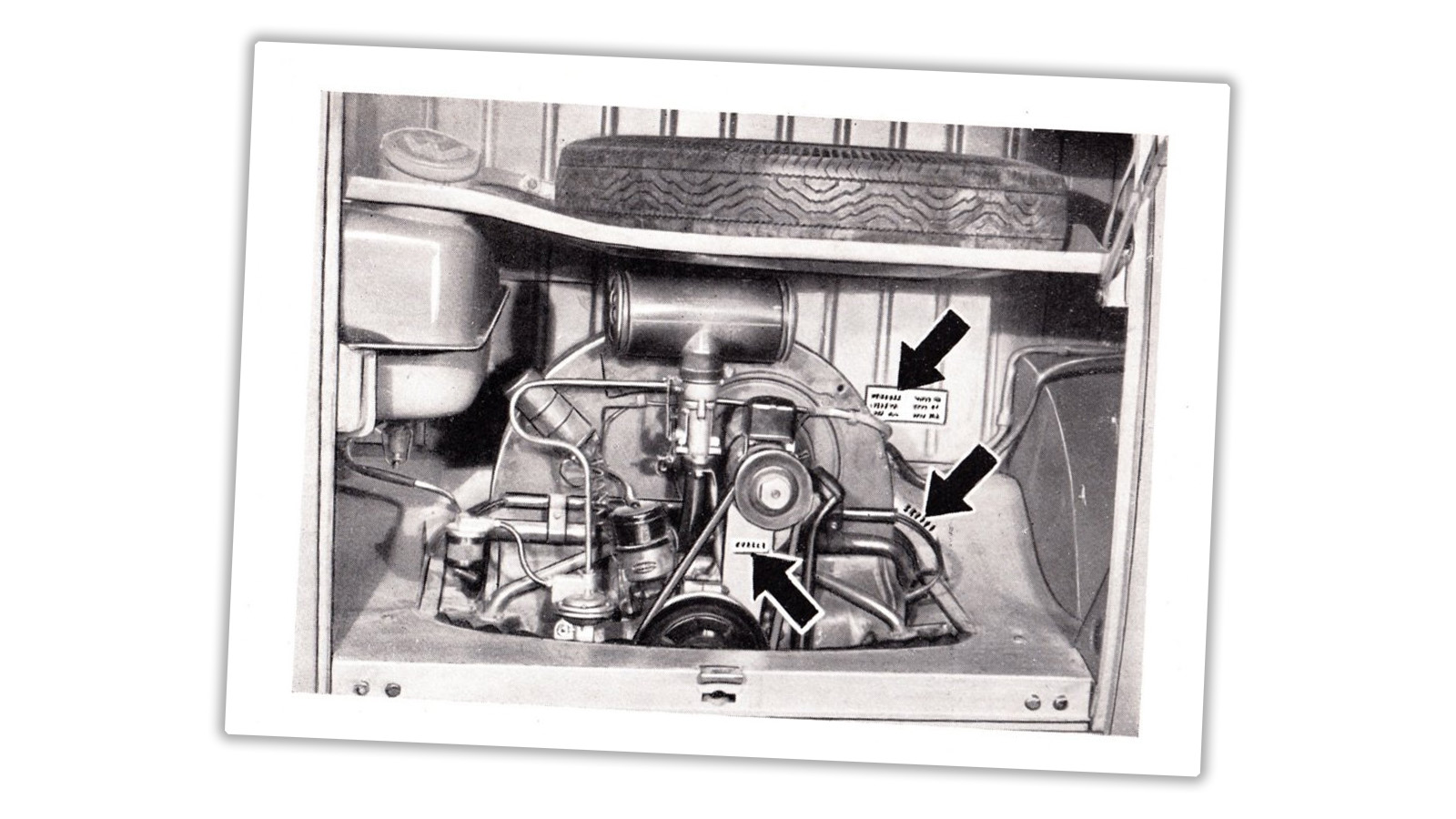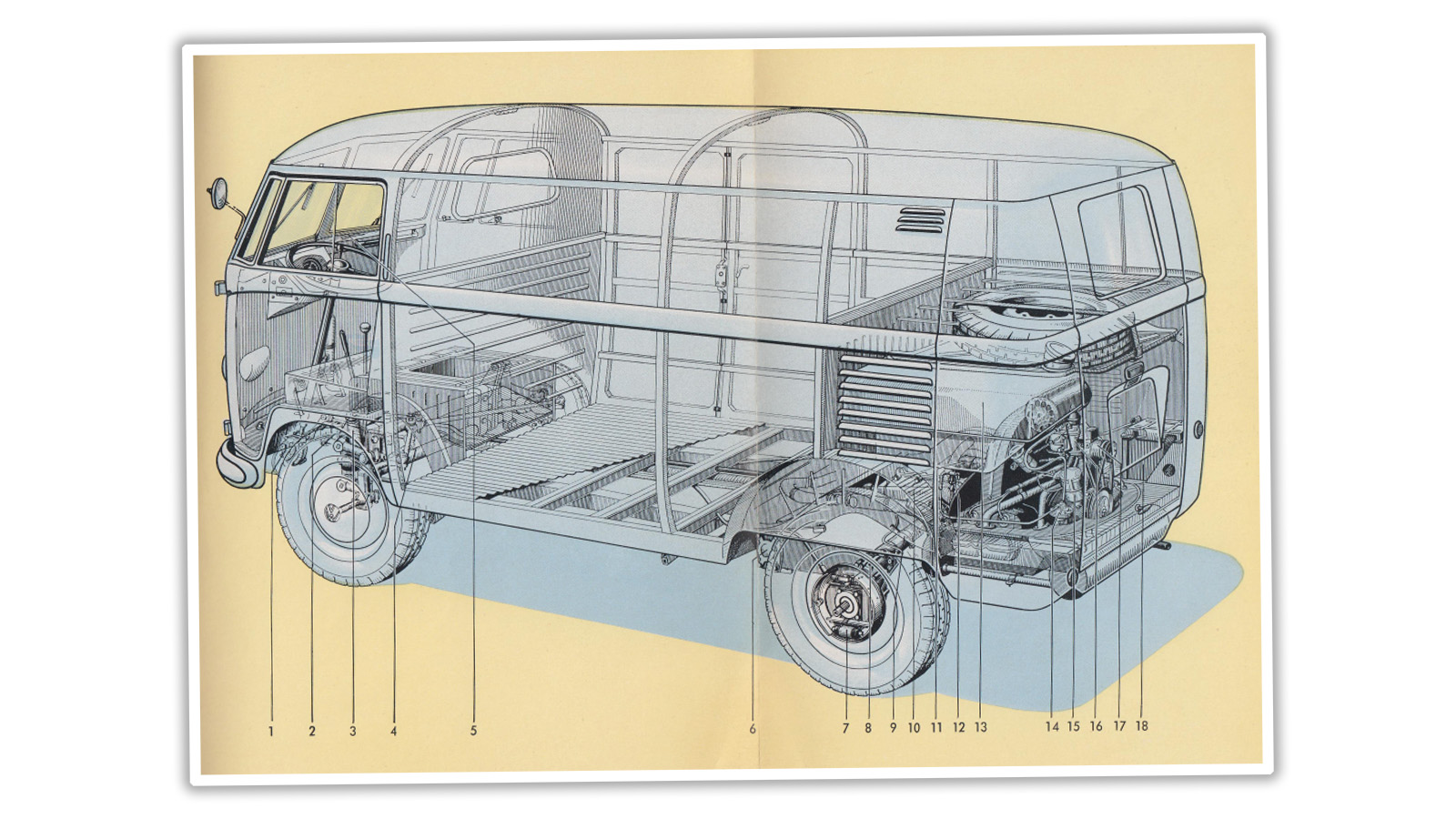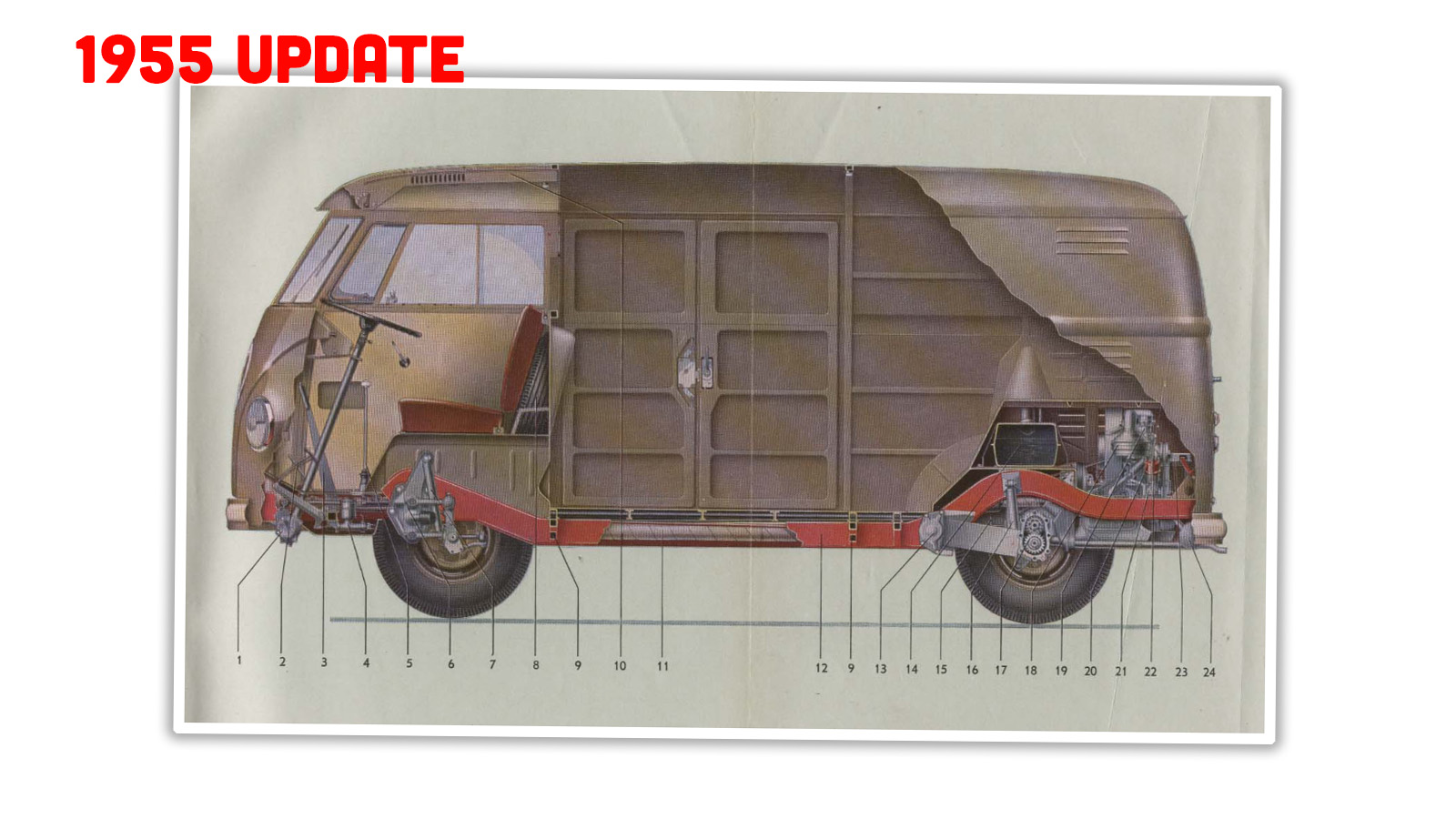I believe I’ve made no secret of my affection for the Volkswagen Type 2 Microbus, a box on wheels with a tiny engine shoved down in the back corner. It’s something that started as a crude sketch of a workhorse machine needed to fill real postwar delivery demands, was engineered as a rational, economical solution to a specific problem, and somehow managed along the way to become one of the most iconic and characterful vehicles ever made. That’s part of why I was so excited to see the lovely very early Bus on display at the Petersen Museum in LA the night we crashed the Tesla Party, though I have to admit that seeing this old bus made me wonder about a question that’s not only completely irrelevant now, but is also about 70 years too late to matter. In short, the best kind of question! Let’s dig in!
First, I have to just say that the Petersen’s very early Microbus was really lovely. I mean, look at it:

Fantastic, right? So, this is a pre-1955 Type 2, which means it looks like this around back:

…and this is where my questions start, questions for which the only people who could probably have given me any sort of real answer are not just long dead, they’re long dead across an ocean, in Germany. Let me explain what I’m talking about. These old, pre-’55 buses are called barndoor buses not because of the side doors that actually do kind of open like barn doors, but because of that engine lid there, which is absolutely massive, like a barn door. Here’s what’s under there:

This is what makes me so confused about these early vans: this colossal engine room is such a terrible use of space and packaging, and everything else about the Type 2 design is so damn good about space utilization and packaging that I just can’t wrap my head around why these decisions were made.
Sure, the old upright-fan engine borrowed from the Beetle is kind of a tall package, but it’s not that tall, and making that huge tray for the spare above it sure doesn’t help anything. If you look at what the Barndoor bus is like on the inside, you can see that the huge, oversized box for engine, fuel tank, and spare tire sure commands a lot of room at the rear of the van:

You can also see from that picture of some of the first Type 2s that they sometimes didn’t even have rear windows, and almost none had any way to access the cargo area from the rear. An optional small opening rear hatch did exist, but was not common at all.
I mean, look at a cutaway of these early Type 2s:

That engine and tire storage room just takes up way too much space, needlessly. You’re not spending a night in there when you change the spark plugs, after all, are you?
Now, this does roughly keep with early Dutch VW importer Ben Pon’s original sketch that eventually became the Type 2 Transporter, but even Pon’s crude sketch seems to leave a bit more cargo room over the engine at the rear:

What confuses me is why the original buses were designed like this? I get that you had to stick the spare tire somewhere but shoving it over the engine (some even had it vertically in the engine bay) seems like the worst way to do it, considering what the van’s purpose was: to load and unload things and move them around.
They could have stuck the tire on the front (like many people did on their own) or underneath, like many vans and utility vehicles did, or on the side like a jeep, or, like they eventually did, behind the front seat bulkhead. I just can’t wrap my head around why the solution they went with was acceptable, because it really feels like the worst solution they could come up with.
In fact, Volkswagen’s engineers and designers even seemed to realize that there were better ways to do it, because even before they redesigned the engine/tire packaging setup in 1955, the ambulance versions of the Type 2 solved the issue completely:

Look! They re-sized the engine room to something more reasonable, and as a result found they had plenty of room for a stretcher, complete with a drop-down door to get it in and out. It’s so much better! And, finally, it must have dawned on someone at VW that, hey, why don’t we just build them all like we build the ambulance one, and get about twice the cargo area and a way to load it from the rear? So, in 1955, that’s what happened.

The spare got its own fun little angled cubby behind the front seats, and that load floor dropped by over a foot, and there was now a rear hatch. Look at the difference:
 Honestly, I can’t think of another car that has so dramatically increased its cargo room without any dimensional changes to its bodywork. Maybe one of you out there will think of something, but when it comes to just re-shuffling stuff inside the envelope of a vehicle, this is a pretty massive improvement.
Honestly, I can’t think of another car that has so dramatically increased its cargo room without any dimensional changes to its bodywork. Maybe one of you out there will think of something, but when it comes to just re-shuffling stuff inside the envelope of a vehicle, this is a pretty massive improvement.
Look how much room that rear area over the engine got since the re-working:

That’s a lot of space back there, and the hatch is incredibly useful! Also, is this the only time an improvement to an ambulance version was incorporated into a mass-market vehicle?
I’m still baffled why the lower floor and rear hatch wasn’t part of the design from the get-go. Even if, say, cost of a hatch was too much, the re-located spare and more reasonably-scaled engine box should have been part of the design from the start.
I’m sure there were reasons, but I have yet to find anything that actually explains it, and, as I said, I think I’m a few decades too late to learn the real truth from the source.
I suppose, given the date, I’ll just be thankful that VW did figure it out by 1955, and leave it at that, a beautiful mystery.




My theory is cooling. They probably didn’t know how much extra strain real world use would put on that tiny little engine, so perhaps it was a better to be safe than sorry approach. Your sleeping in it theory could also be correct, but for different reasons. Perhaps they were worried about access to the engine, so wanted to make it as spacious as possible.
Finally this has highlighted just how monumentally stupid a rear engined van is! Cab over is far better from a load packaging point of view.
I’m going to put on my rarely used MBA hat and consider this from a business management viewpoint. There’s a case for manufacturing these Type 2 vans but you aren’t sure how much demand there might be, maybe only a little, so you want to keep your costs low and that means maximizing parts reuse.
For example, do we really need a bespoke fuel tank? Can the Type 1 tank work? Well sure, if we turn it 90 degrees and stuff it into the engine compartment. But that means the top of the compartment has to be pretty high in order to be able to get a fuel nozzle in there. Well, so be it, and now we can stash the spare tire in there as well. Two problems solved at near zero cost. Besides, why would you want to load from the back, which has a huge liftover height, when you can load from the side where you have some nice doors and a low floor?
Then, it goes into production and the Type 2 becomes a success. Now we can justify a bunch of optimized, model specific parts like a fuel tank with an external filler that let’s us lower the rear deck height. And we know that people really do want to load from the rear, so we’ll make a hatch for that.
It may have been a lesson in cooling. They likely assumed you needed more space around the engine in order to get the airflow / not have searing hot metal in spots. Then after more time / research they said “nein” and slapped the top down way further.
I have a plausible explanation. Cost and schedule. The engineers had a great solution that would make efficient use of the space, but it required another couple of panels. The bean counters said “that’s too expensive!” And the Program office said “that will take too long, we need to get to market ASAP! Just throw a giant barn door on it so we can start making return on the investment!”
– copy and paste this answer for nearly any odd automotive (and consumer) design elements.
The overall design was a bit of a train wreck. When actually a wreck would mean you would most likely be dead. As a kid hitch hiking, you knew bus drivers would likely give you a lift, but it was only marginally faster than walking. That particular version of the bus was designed for really flat places. If there was any relief in the topography, it would detect it and immediately slow down to a crawl. Perhaps they had a much bigger engine that didn’t materialize in fact, earmarked for that space. My bud who spent a fortune on the resto of a 23 window bus was terrified to drive it. With only approximately 3/32nds of metal between you and pretty much anything you hit, you would end up legless or dead, and he used to land on aircraft carriers. It seems only the terminally stupid designs end up as overpriced restoration projects. Heck, I restored a Vanagon Syncro Westphalia, great return on the money, but it was the only car I ever had my wife say, “Is this as fast as it can go?” No, VW busses were poorly designed death traps. No wonder Germany lost the war, if this was any indication of their engineering strengths.
I dont think ive thought of it before.That engine placement is a disaster for commercial use!
What a pigs breakfast of a design
I have a 61 23-Deluxe…
A) People on The Samba would argue this much better (Ask Lind or Everett).
B) Increased collectablity in the 2000’s
C) The British influence